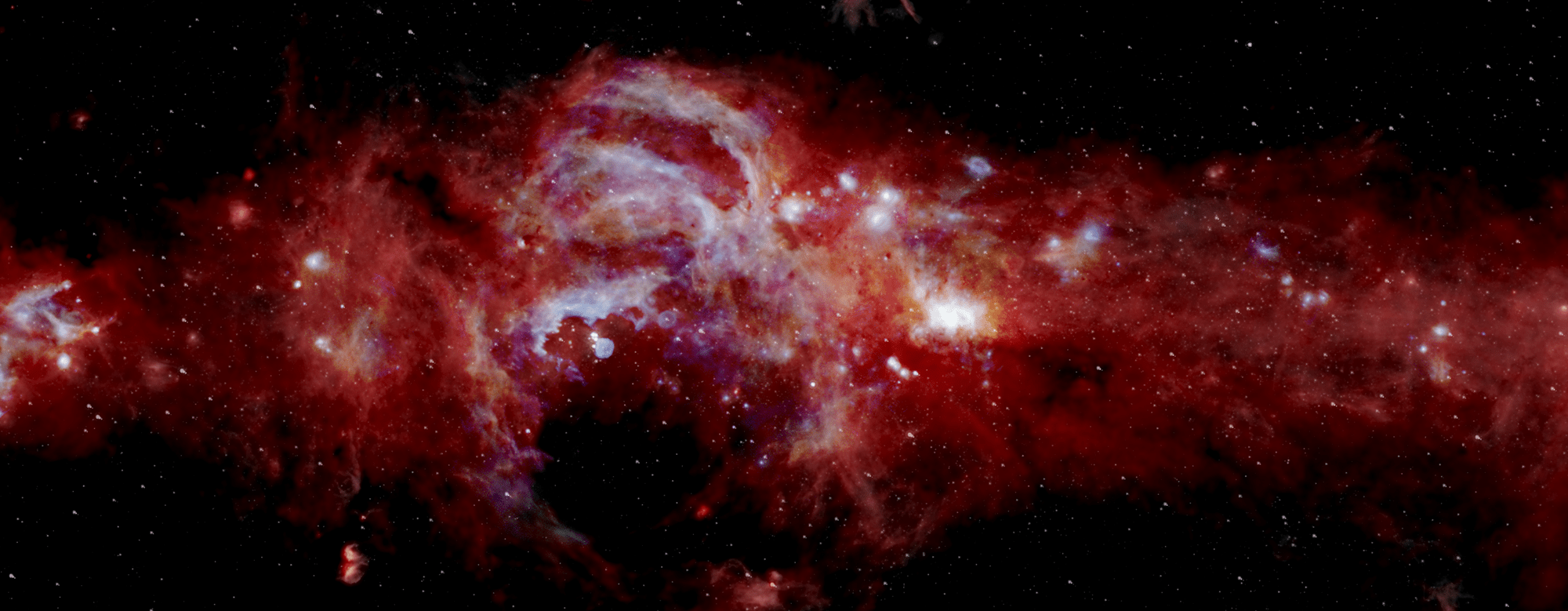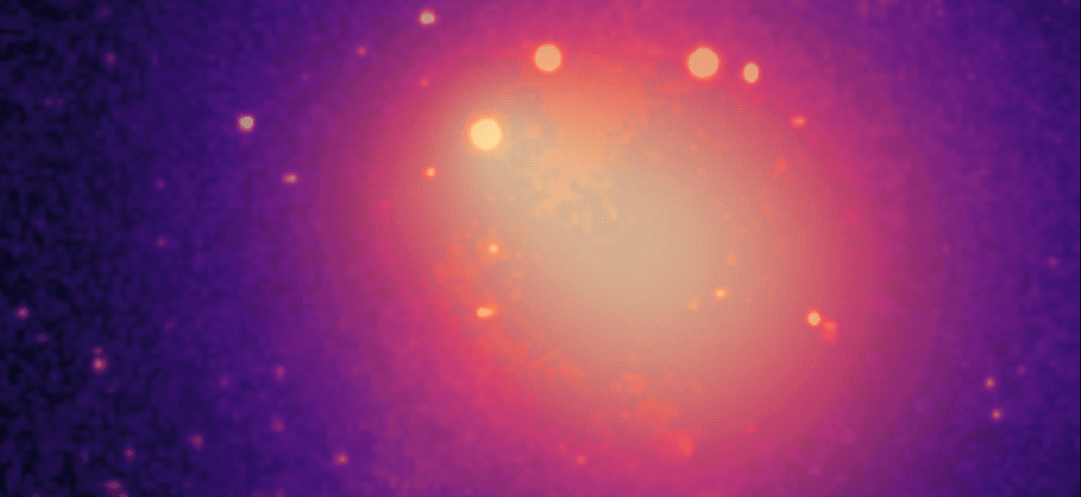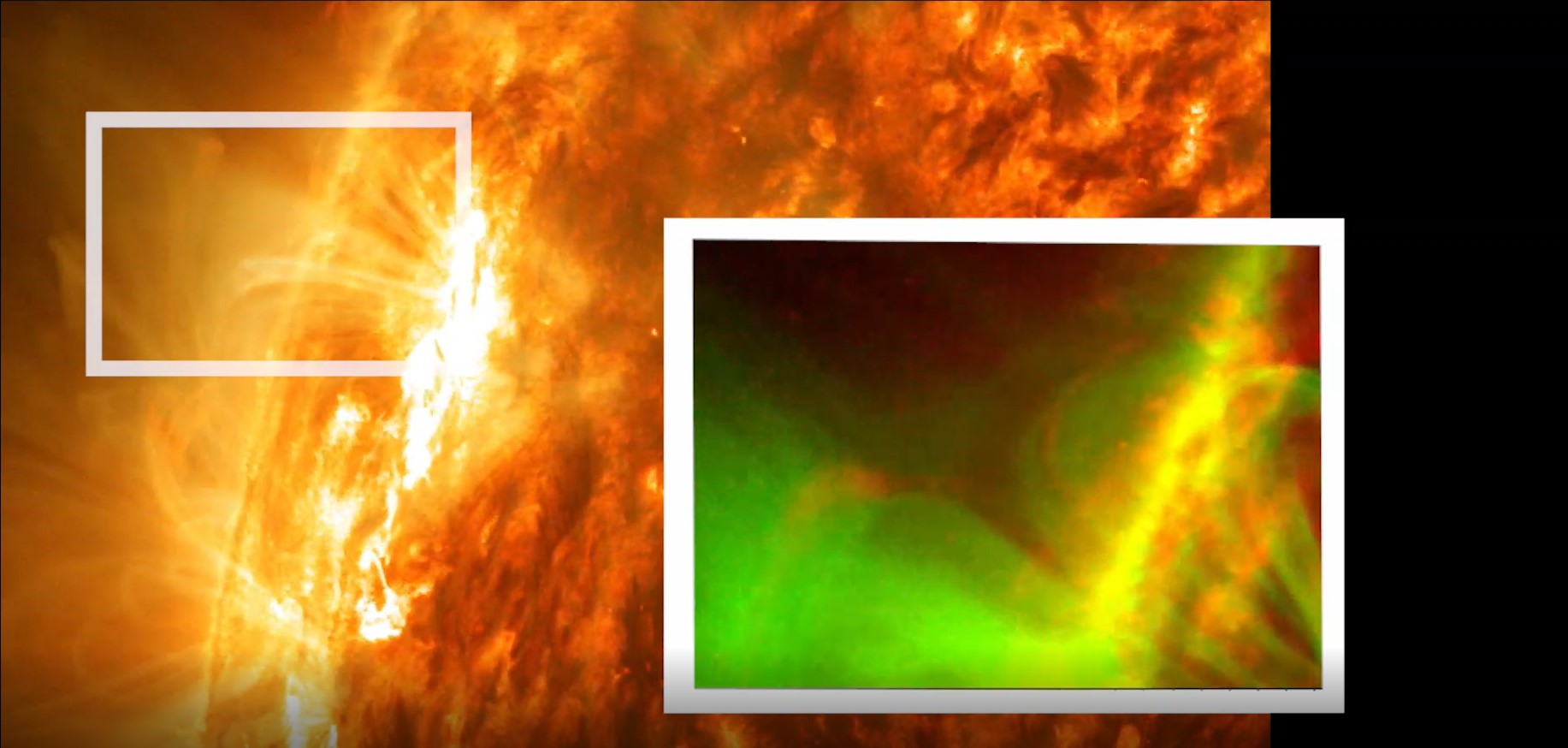The world’s largest airborne telescope, SOFIA, has peered into the core of the Milky Way and captured a crisp image of the region. With its ability to see in the infrared, SOFIA (Stratospheric Observatory For Infrared Astronomy) is able to observe the center of the Milky Way, a region dominated by dense clouds of gas and dust that block visible light. Those dense clouds are the stuff that stars are born from, and this latest image is part of the effort to understand how massive stars form.
Continue reading “This is the Core of the Milky Way, Seen in Infrared, Revealing Features Normally Hidden by Gas and Dust”It’s Snowing Iron Near the Earth’s Core

Scientists theorize that within Earth’s interior, conditions are extremely hot and extremely pressurized. This is what allows for the primarily iron and nickel core to be divided between a solid inner region and liquid outer region. The dynamics of this core are believed to be responsible for driving our planet’s protective magnetosphere, which is why scientists are determined to improve their understanding of it.
Thanks to new research conducted by an international team of scientists, it appears that the core region also gets its fair share of “snow”! To put it another way, their research showed that within the outer core, tiny particles of iron solidify and fall to form piles up to 320 km (200 mi) thick on top of the outer core. These findings could vastly improve our understanding of the forces that affect the entire planet.
Continue reading “It’s Snowing Iron Near the Earth’s Core”Spaceflight Stories Expected for 2020
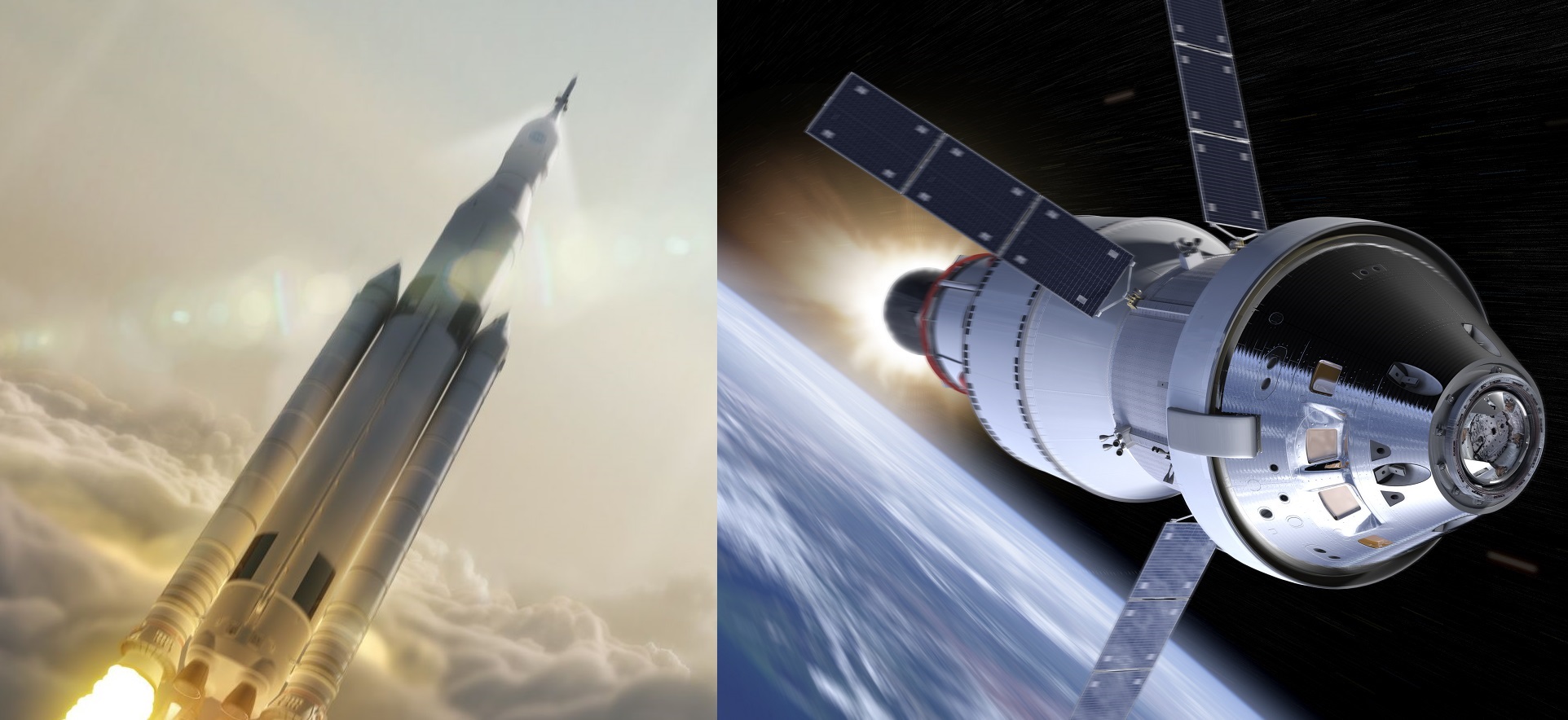
The year two thousand and twenty is almost upon us. And as always, space agencies and aerospace companies all around the world are preparing to spend the coming year accomplishing a long list of missions and developments. Between NASA, the ESA, China, SpaceX, and others, there are enough plans to impress even the most curmudgeonly of space enthusiasts.
Continue reading “Spaceflight Stories Expected for 2020”Top Astronomical Events for 2020
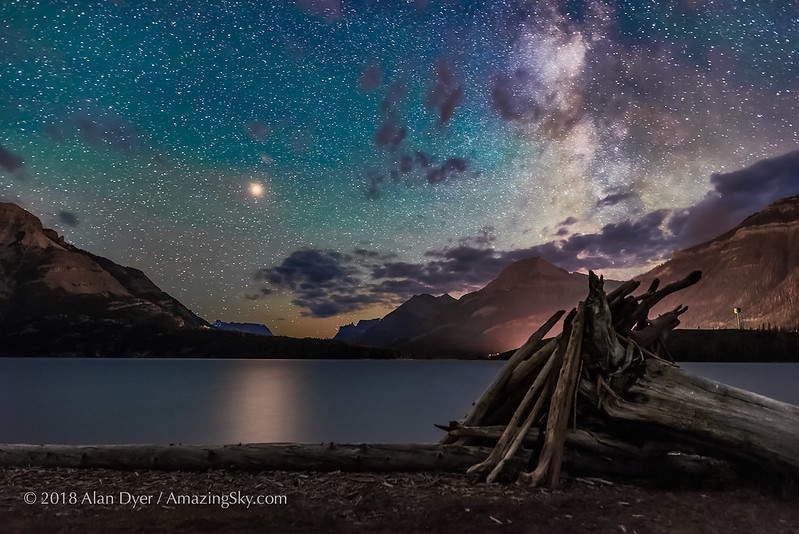
Ready for another amazing year of sky watching and astronomy in 2020? Hard to believe, were already a fifth of the way into the 21st century. 2020 rounds out the final year of the second decade, promising an amazing year of skywatching to come.
Continue reading “Top Astronomical Events for 2020”Waiting for Betelgeuse: What’s Up with the Tempestuous Star?

Have you noticed that Orion the Hunter—one of the most iconic and familiar of the wintertime constellations—is looking a little… different as of late? The culprit is its upper shoulder star Alpha Orionis, aka Betelgeuse, which is looking markedly faint, the faintest it has been for the 21st century.
Continue reading “Waiting for Betelgeuse: What’s Up with the Tempestuous Star?”Halo Around a Pulsar could Explain Why We See Antimatter Coming from Space
Astronomers have been watching a nearby pulsar with a strange halo around it. That pulsar might answer a question that’s puzzled astronomers for some time. The pulsar is named Geminga, and it’s one of the nearest pulsars to Earth, about 800 light years away in the constellation Gemini. Not only is it close to Earth, but Geminga is also very bright in gamma rays.
Continue reading “Halo Around a Pulsar could Explain Why We See Antimatter Coming from Space”Our Guide to the December 26th Annular ‘Ring of Fire’ Eclipse
Ready for the final ‘Ring of Fire’ solar eclipse of 2019? The final eclipse of the year kicks off this week on Wednesday, early on December 26th the day after Christmas, with an annular solar eclipse spanning the Indian Ocean region from the Middle East to the western Pacific.
Continue reading “Our Guide to the December 26th Annular ‘Ring of Fire’ Eclipse”Black Holes Were Already Feasting Just 1.5 Billion Years After the Big Bang
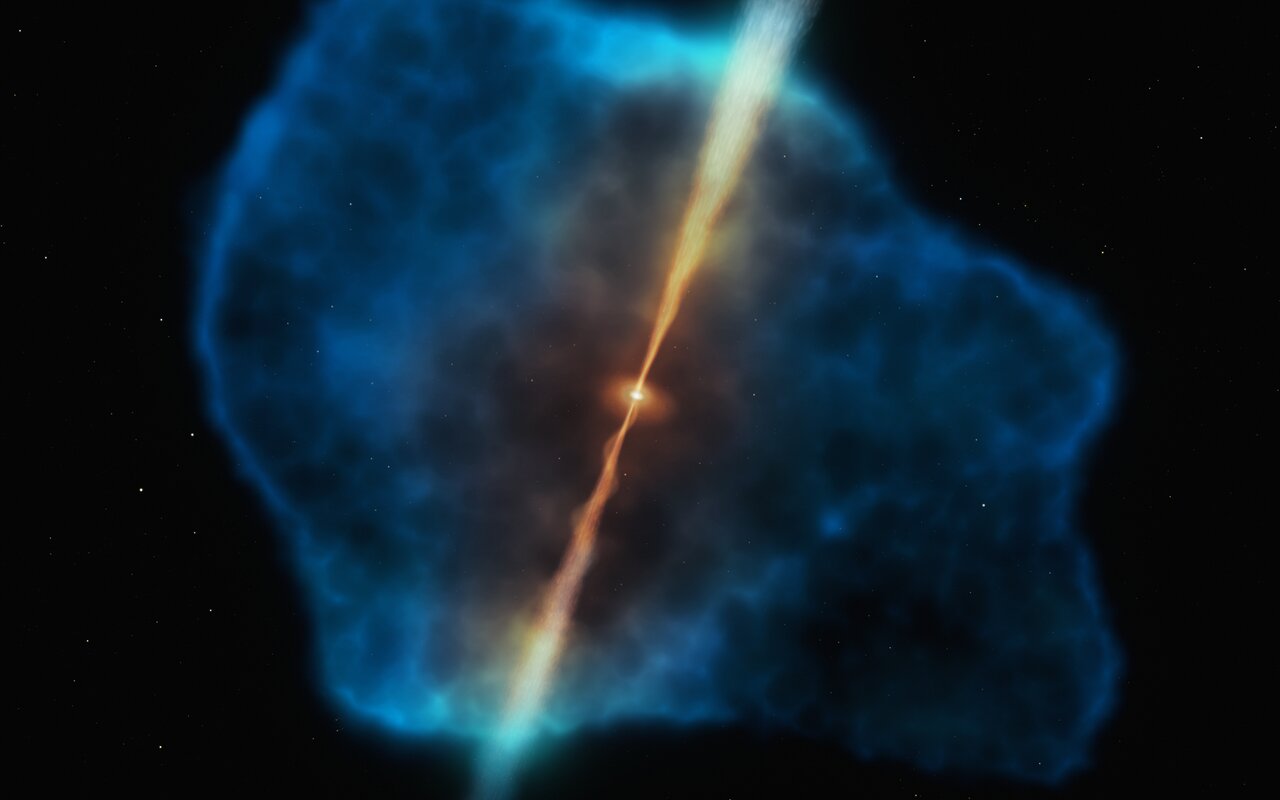
Thanks to the vastly improved capabilities of today’s telescopes, astronomers have been probing deeper into the cosmos and further back in time. In so doing, they have been able to address some long-standing mysteries about how the Universe evolved since the Big Bang. One of these mysteries is how supermassive black holes (SMBHs), which play a crucial role in the evolution of galaxies, formed during the early Universe.
Using the ESO’s Very Large Telescope (VLT) in Chile, an international team of astronomers observed galaxies as they appeared about 1.5 billion years after the Big Bang (ca. 12.5 billion years ago). Surprisingly, they observed large reservoirs of cool hydrogen gas that could have provided a sufficient “food source” for SMBHs. These results could explain how SMBHs grew so fast during the period known as the Cosmic Dawn.
Continue reading “Black Holes Were Already Feasting Just 1.5 Billion Years After the Big Bang”Astronomers Discovered a New Kind of Explosion That the Sun Can Do
In the course of conducting solar astronomy, scientists have noticed that periodically, the Sun’s tangled magnetic field lines will snap and then realign. This process is known as magnetic reconnection, where the magnetic topology of a body is rearranged and magnetic energy is converted into kinetic energy, thermal energy, and particle acceleration.
However, while observing the Sun, a team of Indian astronomers recently witnessed something unprecedented – a magnetic reconnection that was triggered by a nearby eruption. This observation has confirmed a decade-old theory about magnetic reconnections and external drivers, and could also lead to a revolution in our understanding of space weather and controlled fusion and plasma experiments.
Continue reading “Astronomers Discovered a New Kind of Explosion That the Sun Can Do”Mars 2020 Takes a Test Drive
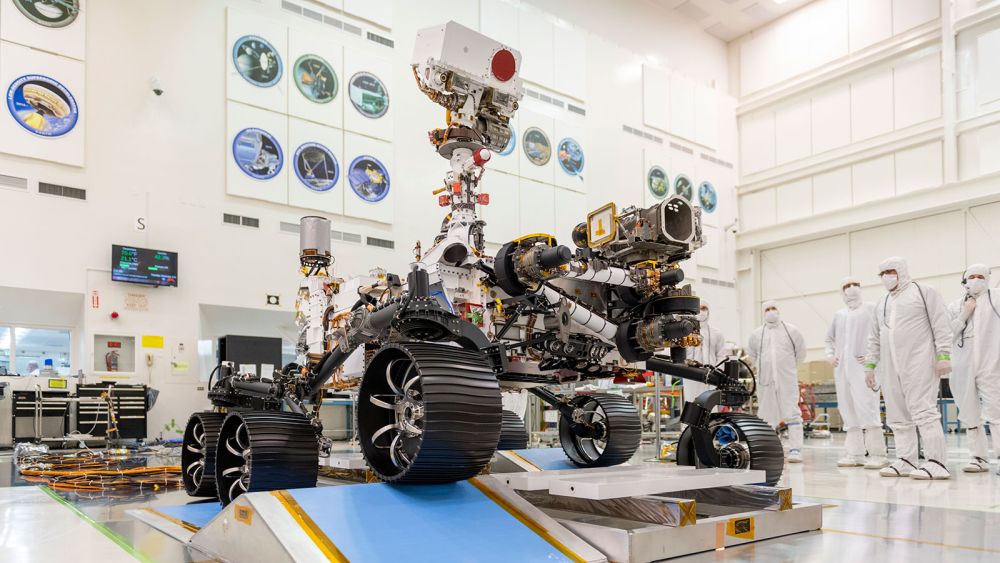
NASA’s Mars 2020 rover has passed its driving test. The test was mostly a forward and backward maneuver, with a six-wheeled pirouette thrown in. It’s autonomous navigation system was also part of the test. Like a toddler’s first tentative steps, this is an important milestone.
Continue reading “Mars 2020 Takes a Test Drive”
